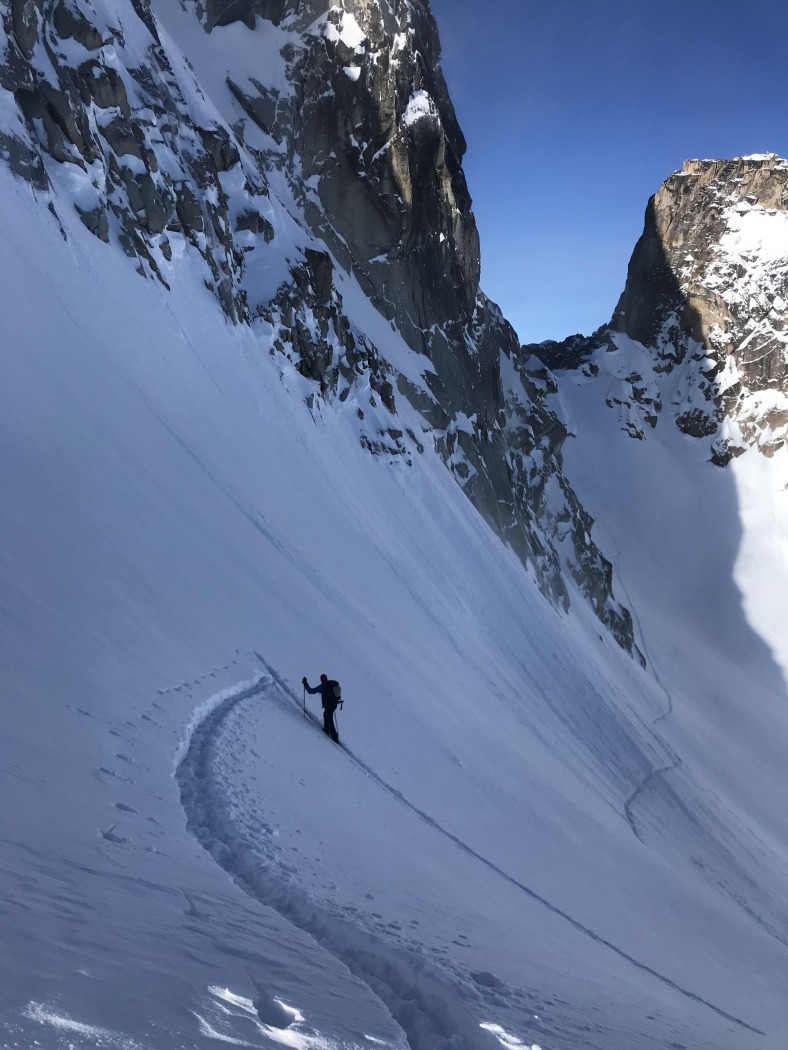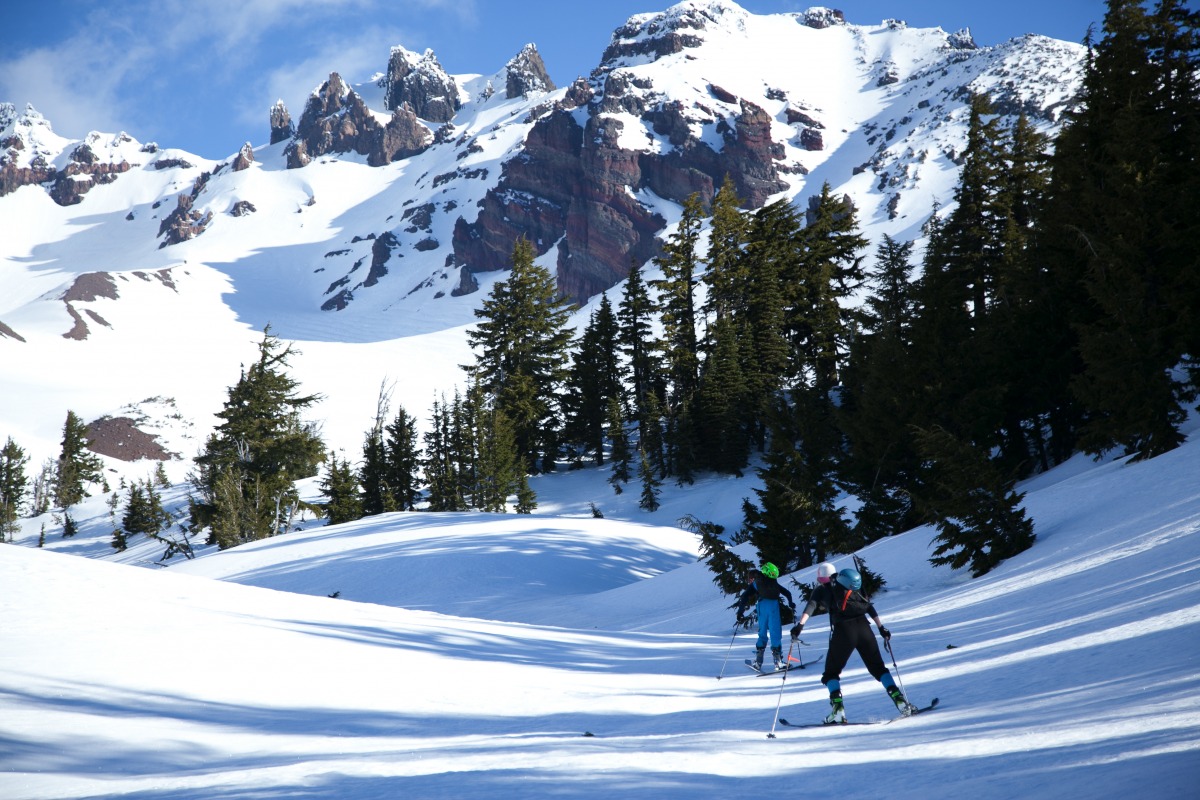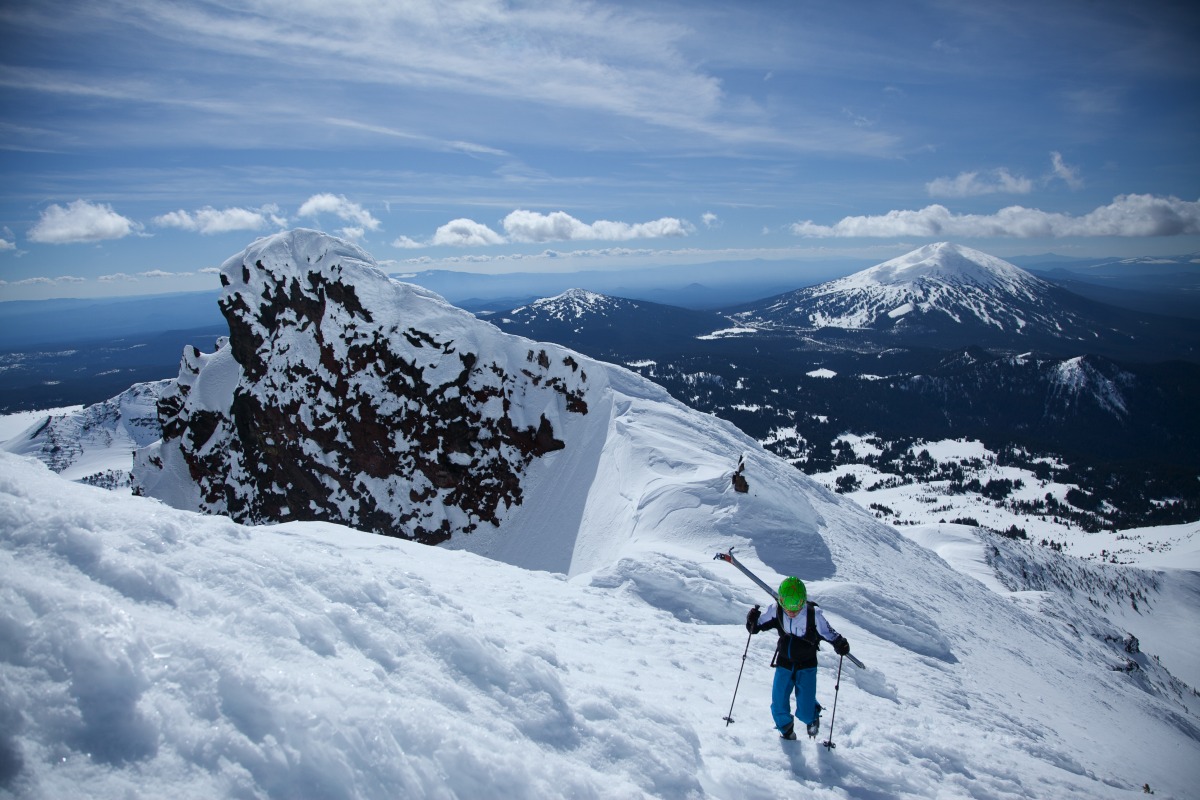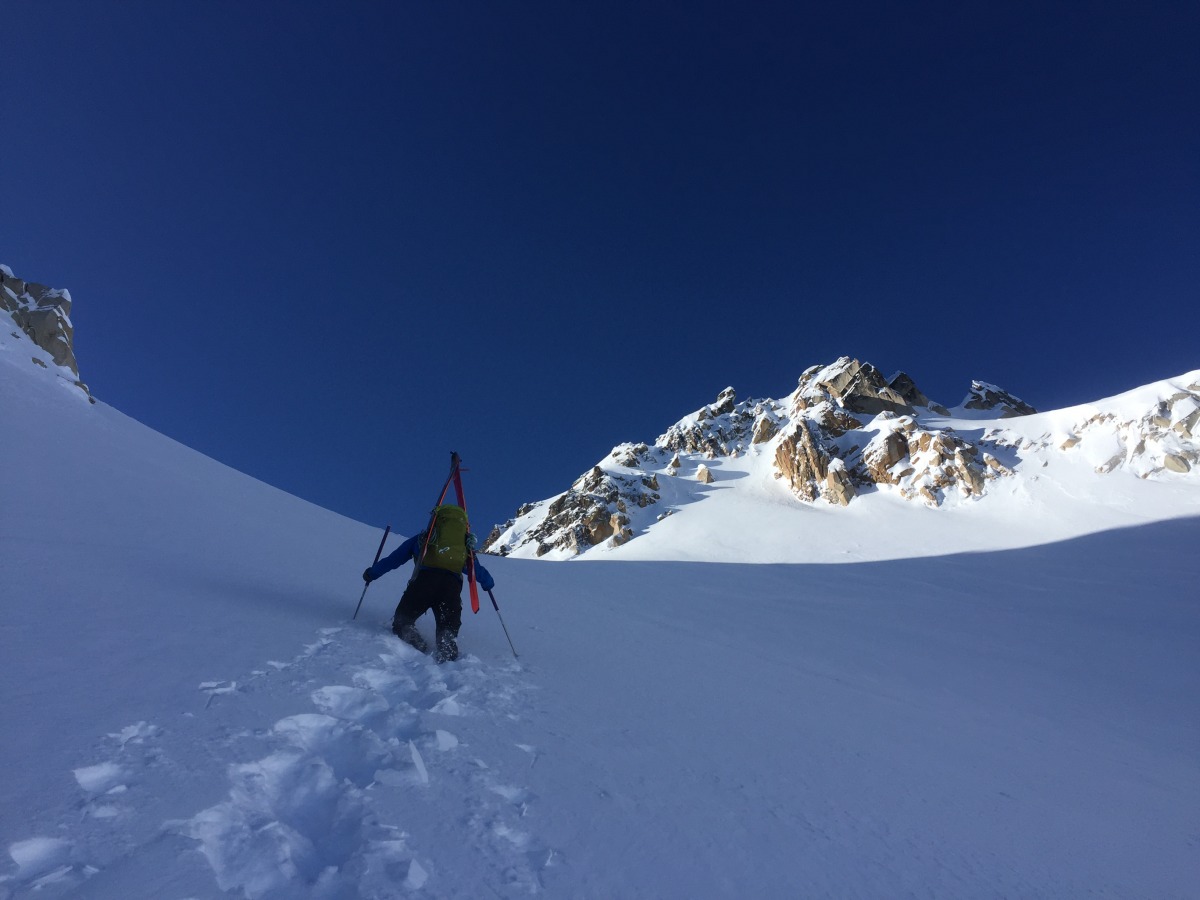This is part three of a three-part series on fitness in the backcountry. You can find part one here: Eearly Season Fitness Tips Part 1: Time to transition. You can read part two here: Strength training for ski touring and ski moungtaineering.
It will come as no surprise to readers of this and other outdoor sports-oriented resources that the biggest bang for your buck in training comes through aerobic efforts: lots of time spent at or near your aerobic threshold (or AeT, the optimal heart rate for building aerobic capacity and metabolic economy for long-duration activity). Increasing the frequency and duration of these aerobic sessions will ensure you have a rock-solid base to build upon, supporting not only your longer efforts in the mountains but also the recovery that follows.
While ski touring involves many hours on your feet, the effort during tours can vary above and below AeT. One-to-two-hour runs, hikes, and the occasional bike ride will all put money in your aerobic bank, ensuring you have a broad base to spring from for those big days in the mountains.
Specificity: If you lack the ability or terrain to complete your midwinter aerobic workouts on skis, or if you’re training in the months preceding winter, consider ways in which you can shift the specificity of your aerobic sessions toward ski touring. Adding steeper vertical trails or even off-trail terrain and using light trekking poles will help engage those skiing muscles. Believe it or not, the arms get a pretty solid workout when skinning up even moderate skin tracks. It pays off down the road to start using a pair of running/trekking poles early on in the dryland season to prepare your arms for plunging through deep pow to top out on that ridge.

No one wants to feel unfit in mountainous terrain. Lots of time training properly will ensure you have a rock-solid base to build upon, supporting not only your longer efforts in the mountains but also the recovery that follows. Photo: Sam Naney.
Downhill running can provide an excellent training effect for skiing if your body allows it: the agility and quickness demands of running down a technical trail or off-trail terrain mimic the proprioceptive demands of a steep ski line. And, the impact on your leg muscles will help toughen them for the countless turns and direction changes of a winter descent. As I’ve written about in previous articles, use caution when downhill running. This can lead to injury—not only to your knees but also to your head should you trip and do a Superman-type fall. If you are an inexperienced mountain runner, incorporate downhill running into your routine gradually.
Intensity: High-intensity aerobic/anaerobic training plays more of a supporting role in your overall preparations for ski touring than do lower-intensity aerobic loads. However, building a small regimen of moderate intensity into your training helps deliver a sport-specific muscular endurance punch. It also buffers your system against those times when you’re topping out a steep, waist-wallowing booter up a couloir or chasing the last line of the day and feeling totally gassed.
A great way to introduce intensity into your diet is to employ Zone 3 (AnT) intervals after your first several weeks of exclusively aerobic (AeT or below) volume. Work completed at this intensity range allows you to move at a decent rate (training speed and economy), challenges your aerobic power (ability to produce more force aerobically), and improves global (muscle group-level) muscular endurance. For these Z3 sessions, use uphill terrain and poles for specificity if you can’t be on skis. Start with one session per week and see if you can complete the workout and recover well enough to maintain the total weekly volume you were accustomed to; the goal is to sustain the load without dropping hours to accommodate the new intensity.
What is Z3, you ask? In a four-zone intensity system, you have the following:
Zone 1: Recovery – Typically, this zone ranges from a walking effort up to a brisk hike or light jogging HR equivalent, 55-65% of your max heart rate.
Zone 2: Aerobic Threshold – This is your key aerobic training zone; it ranges from the top of Zone 1 to your Aerobic Threshold heart rate, which can be derived in multiple ways, from a gold-standard lab metabolic test, to a cardiac “drift” test performed on a treadmill, to using the MAF formula (180-age). This zone’s range is typically 65 – 80% of max heart rate.
Zone 3: Anaerobic Threshold – This is the zone that often gets branded as the “death zone” for aerobic training, because while in the midst of this zone you’re working harder than a true aerobic effort but not fast enough to warrant valuable economic gains which come from training at and even above your Anaerobic Threshold (AnT), which represents the top of Zone 3. The AnT is equivalent to your FTP (if you’re a cyclist), and can be derived much the same way by taking the average HR of a ~45min all-out effort. This zone’s range is typically 80 – 85 or 90% of max heart rate.
Zone 4: Max VO2 – This zone is everything above your AnT, all the way to max heart rate. Good for building anaerobic capacity and training your speed, work in this zone is typically done in short (2-5 minutes or less) interval form or in race efforts.
Example Z3 Interval Session:
–Warm up with 15–20 minutes of easy running or ski walking, build up to AeT heart rate, and finish at the base of a long, sustained climb.
–Complete 2×2 minutes uphill at an effort trending upward through your low Z3, approaching AnT. Rest 1 minute between each repeat and return to the bottom of your climb at the end.
–Workout: Complete 4×5 minutes of either uphill skinning on snow, or uphill ski walking–to–moose hoofing at an effort as close to AnT as possible. Use the first interval to gradually ramp the heart rate up to AnT, not pegging a high effort from the outset as that may result in a blowup. Do 1-2 minutes of light walking recovery between repeats, essentially taking just enough time for your HR to recover back to Zone 1.
–Cool down with 10–15 minutes of very easy jogging (sub AeT).

Maintaining a program with ample time conditioning your aerobic capacity will pay dividends in the spring when it might be time to skate ski into some objectives.
Progress your Z3 intensity by increasing the duration of each repeat and/or the number of repeats. Build toward 3–4 intervals of 10–12 minutes apiece, again ensuring that you are able to recover well and maintain the volume and workouts during the rest of your week.
If you maintain this program for 6-8 weeks, along with a balance of aerobic volume and strength training, you will be well prepared for the ski season. That said, it’s always tempting to go out of the gate too hard on your first tours.

Fitness will come -maybe not for your early season December tours, but for certain, it will arrive as the season evolves.
Regardless of how well you train in the Fall, skiing is still different from any form of dryland training and you will not be in your top condition until later in the winter—after you’ve logged many day tours. All the preseason training advice doled out above is meant to prepare you to start the season in a better place, not to put you in peak shape for those early December tours.
For the best season outcome, continue the program after getting on the snow. Gradually add volume (longer tours with more vert) and more Z3 intensity sessions (not in the same workout, though!). Continuing a gradual progression will allow you to build fitness through December and January and feel your best in February and March. Transitioning from a modest dryland program directly into a couple of 10,000-foot days in December just because the stoke was high is a good way to be a “Christmas star”—you shine bright early, then, your fitness and performance plateau or even decline by midseason. Play your cards right and give your body the time to adapt, and that February hut trip could see you in crusher form for a week of back-to-back 10,000-foot days.
Sam Naney grew up in the North Cascades of Washington State, and dedicated much of his young life to Nordic ski racing. He attended Dartmouth College where he earned a degree in History, skiing four years on the varsity squad before graduating and commencing a post-collegiate career, racing domestically and internationally until 2014 when he retired from racing to begin his coaching journey.
After five years working with his own former coach Scott Johnston at Uphill Athlete, where he was most recently the Director of Coaching, Sam now serves as Program Director for the Methow Valley Nordic Ski Team, and also co-owns and operates Cascade Endurance with his wife Alison, offering endurance training resources and events across the Pacific Northwest and beyond. They include The Fifty aspirant, Cody Townsend, as a client. When he’s not chasing new lines in the mountains by foot or by ski, nor chasing little kids around at ski practices, he chases his own two daughters Fiona and Isabella, his wife and their Siberian Husky across his home range.

